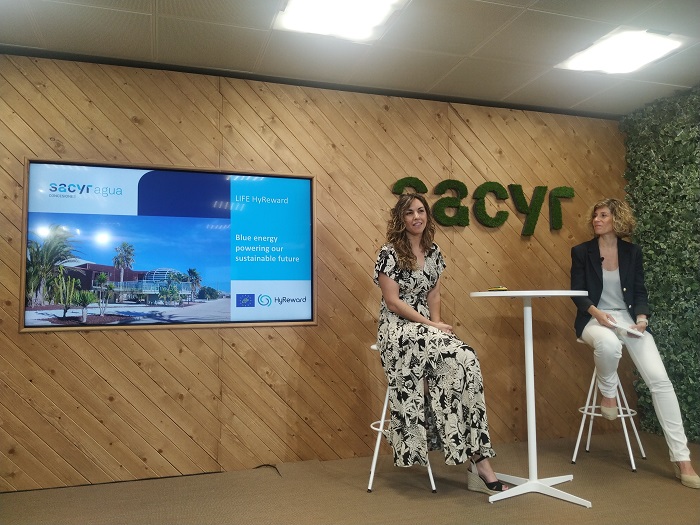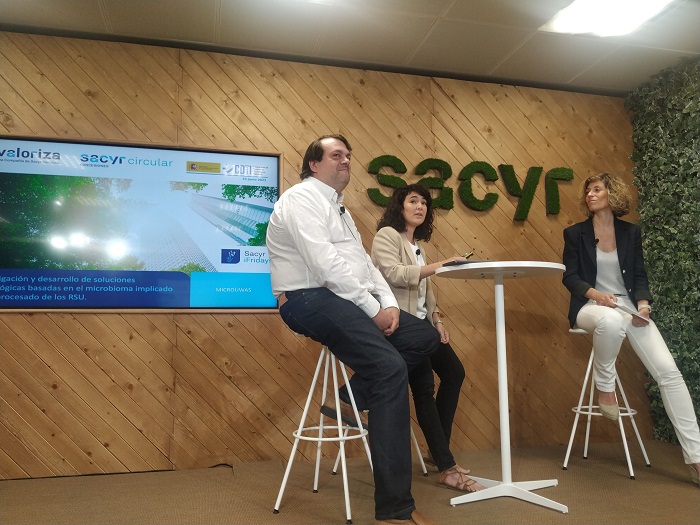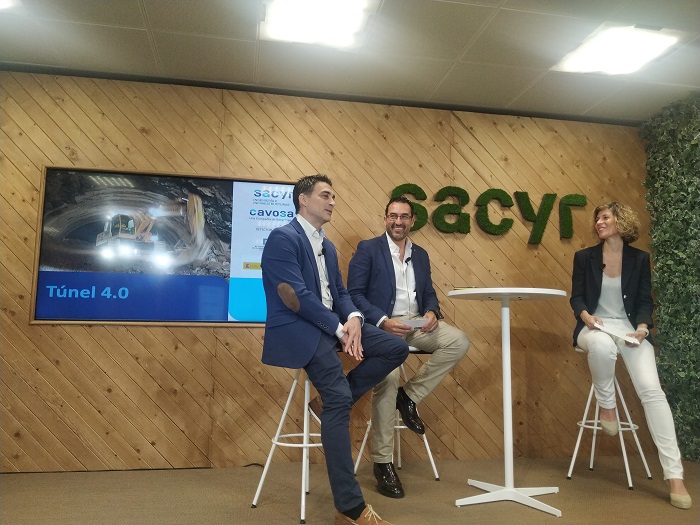Last June 24, we held our last iFriday before the summer holidays, under the title “Sacyr and Innovation, an inseparable pair”.
So far in 2022 we have had multiple innovation agents over that have served as inspiration to the company. In this first half of 2022, we spoke about gastronomic innovation with Nino Redruello, in February, some women in the STEM field visited our offices, in March, Antonio Oliva, Director of R&D at New Growing System discussed sustainable agriculture, Yaiza Rubio, from Telefónica brought us the metaverse in April, and in May, we learned about renewable energies with Gonzalo Sáenz de Miera from Iberdrola.
Like every year, June’s iFriday focused on internal innovation at Sacyr. Some of the supervisors of the most innovative and sustainable projects at Sacyr shared how they were developed and what their progress is like.

Life HyReward
Patricia Terrero, Head of R&D+i at Sacyr Agua, presented project Life HyReward. The goal of this project is to explore how to generate electricity from brines resulting from desalination to make it more sustainable. The project seeks to assess how viable it is to settle on a new, more sustainable desalination process, combining reverse osmosis, a water desalination process that pressure filtrates salt water through membranes that do not let salt through, and reverse electrodialysis, which generates electricity from the saline gradient between two solutions with differenty degrees of salinity, like salt water and fresh water.
The incorporation of this process with conventional technologies allows to improve electricity generation in desalination processes, by recovering electric energy from the brines obtained in desalination before releasing them back into the sea, which in turn also reduces CO2 emissions.
“While our planet is called the blue planet, the availability of fresh water is very scarce, and we have a significant water deficit which is likely to aggravate in the next few years due to the effects of climate change. We need to look into unconventional resources to ensure demand supply, using desalination to obtain fresh water”, explained Patricia Terrero.

Microuwas-BIO
The new hybrid process aims to be environmentally-friendly, generate clean and 100% renewable energy, without any negative consequences for the environment, contributing to reducing emissions and mitigating climate change.
Then, Juan Pablo Antillera, Technical Director of Waste treatment of Sacyr Circular and Paloma Mingo, Manager of R&D projects of Valoriza, presented the project Microuwas-BIO.
This project seeks to design and develop a small-scale anaerobic digestor to identify and analyze the intervening microorganism colonies. This way, we achieve unprecedented levels of biotechnological control. The final goal is to increase the volume and quality of biogas and reduce the amount of waste bound to landfills and its biological and chemical reactivity.
“This project focuses on anaerobic digestion. This project consists of the degradation of organic matter by microorganisms, always without oxygen, which on the one hand generates biogas, a methane and CO2 rich gas with high energy values, and digestate, on the other, a solid component that can be used as compost or a supplement to remediate degraded soil after composting”, clarified Paloma Mingo.
“The project has two distinct phases. As for the microorganism identification phase, we have spent the past 12 months taking samples in one of the digestors, which performs thermophilic anaerobic digestion, and is located in an eco-park in La Rioja, in a facility run by Sacyr Circular. All the samples were taken from the same digestor to assess how they evolve in time, by extracting DNA from all the samples taken over time. The results are promising, but they also give us a glimpse of how complex the ecosystem in the digestors is”, concluded Juan Pablo Antillera.

Tunnel 4.0
Lastly, to conclude the session, Pablo García del Campo, technical director of Cavosa, and Miguel Martín Cano, Manager of innovation projects and knowledge of Sacyr Engineering and Infrastructures, spoke about Tunnel 4.0, an inititative that aims to improve the tunnel construction process through four action lines: use of live voice and data technology through tunnel lighting, machine sensorization for predictive analysis and machine monitorization, the development of real-time of excavation positioning; development of web applications to automate calculations.
Pablo García del Campo spoke of excavation control: “We’d noticed that workers couldn’t see properly while they were excavating. Without a reference, and even if they had it, they needed to wait for topographers to give the indications, which delayed works. Project Tunnel 4.0 was created to improve this process by creating a Google Maps of sorts, for the excavation equipment. This way, workers can see what their position is at any given time”.
According to Miguel Martín, one of the most dangerous and complicated tasks for geologists is to detect fissures in an excavation. “We have developed a browser and mobile app to help us recognize the majority of parameters, automate calculations and increase personnel safety. Thanks to this program, just by taking a picture, we can apply a series of filters able to define, detail and measure fissures and their size to preemptively detect them”.